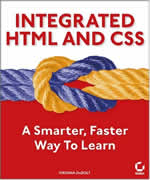 Yep, that’s me–all wrinkled up like a Shar-pei. Ah, to have the life of a dog, a flappy-skinned little Shar-pei. But when you’re a wrinkled old biddy like me, people don’t run up to you, scratch behind your ears, and exclaim, "Aren’t you just the cutest thing!"
Yep, that’s me–all wrinkled up like a Shar-pei. Ah, to have the life of a dog, a flappy-skinned little Shar-pei. But when you’re a wrinkled old biddy like me, people don’t run up to you, scratch behind your ears, and exclaim, "Aren’t you just the cutest thing!"
All those wrinkles are no doubt increased because you just can’t sleep as much as you used to when you get older. So much less beauty sleep is bound to have an effect, right?
I’m currently working on a project with some folks two time zones to the West of me. Today I got up at 4 a.m. and sat down at the computer to work. By 8 a.m. I had half a day’s work done, and my co-workers weren’t even out of bed yet. I thought that opening your eyes, wide awake and ready to rock, at 4 a.m. was a drawback, a handicap.
Yesterday, however, I heard a story about a woman who turned the peculiar sleep needs of the aging into a boon. She gets along fine on a couple of hours sleep now and then, so she hires herself out to sleep with newborns. She spends the night in the baby’s room and crawls out of bed to feed and change the little darling as needed. Mom and dad wake refreshed in the morning to take over. During the day she is busy living her normal life. She sleeps with the baby until it is sleeping through the night, then moves on to a different newborn.
From the perspective of a teacher, I’ve seen some interesting people in my classroom. Some of them are pliable and do things exactly the way you instruct. Some of them maintain their own peculiarities in spite of everything that happens around them. They have their own ideas about what makes sense as web navigation, what looks good on a web page, what uses the web can be put to. It doesn’t hurt teachers to get the occasional reminder that what seems to be a handicap or a problem can often turn into a good thing. Success comes in many forms. Sometimes it’s good to trust that even the average student may find a way to make life sing using the skills learned in your classroom; unless, of course, they’re sleeping in class.

